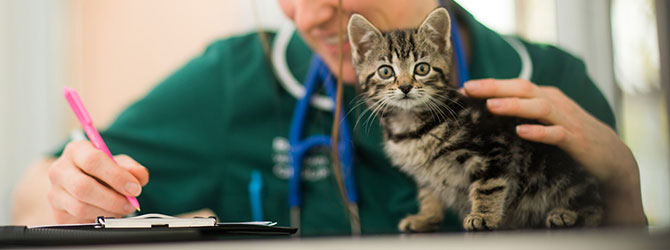Cat Epilepsy - Feline Epilepsy Causes
2 min read
If you’ve never seen a cat having a seizure, it can be a distressing experience. But there are many causes of seizures in cats, and feline epilepsy is relatively common – affecting around four in every 100 cats.
So, what is feline epilepsy, what should you do if your cat has a seizure, and what are the long-term effects of seizures in cats? Here’s what you need to know.
What is feline epilepsy?
Epilepsy in cats is a brain disorder that causes sudden fits or convulsions, in much the same way as epilepsy affects us humans. Usually starting between the ages of one and five years old, epileptic fits can cause your cat to experience dramatic and violent spasms.
Feline epilepsy is incurable, but it can be effectively managed with medication prescribed by your vet, and most cats with feline epilepsy go on to live long and happy lives.
Other causes of seizures in cats
Epilepsy isn’t the only cause of seizures – convulsions and fits can be caused by any disease that affects the way the brain functions. Feline convulsions may be caused by a head injury, heart condition, brain tumour, stroke, or even poisoning.
There’s only one way to diagnose the cause of your cat’s seizure: make an appointment with your local vet, who will run a series of tests – such as blood tests– to establish the cause of the convulsions, identify any underlying health condition, and recommend treatment options.
The symptoms of seizures in cats
Cats experiencing a seizure or convulsion may experience a wide range of symptoms. The list below should help you to recognise if your cat is having a fit or seizure.
- Twitching muscles
- Rigid limbs
- Lost consciousness
- Difficulty breathing
- Foaming at the mouth
- Chewing or chomping
- Calling out
- Involuntary urination and/or defecation
What should I do if my cat has a seizure?
If your cat starts having a fit, stay calm and clear the area around her to make sure she can’t fall off a high surface or otherwise injure herself. Try not to move your cat while she’s experiencing the seizure, but make a note of the time it starts. Most seizures last less than three minutes, but it can take a couple of hours for your cat to completely return to normal from the episode. If the seizure lasts longer than a few minutes, get in touch with your vet immediately for advice. Be careful that your cat does not unintentionally injure you with her teeth or claws – she is not aware of her movements at this time so do not try to hold her mouth open or closed or hold her paws still.
“Epilepsy isn’t the only cause of seizures – fits and convulsions can be instigated by a head injury, heart condition, brain tumour, stroke, or even poisoning.”
What are the long-term effects of seizures in cats?
If your cat suffers prolonged fits, seizures or convulsions in a short space of time, there’s a risk she could suffer brain damage. Cats have been known to fall into a coma after experiencing a serious seizure, but this is extremely rare.
If you have any concerns about your cat’s health, contact your vet immediately. Getting advice and treatment quickly can help to reduce the long-term effects of the seizures.
Need advice on seizures or epilepsy in cats?
For expert advice on feline epilepsy and the other possible causes of convulsions in cats, contact your local vet today.
Find your nearest vet using our Find a Vet page, or speak to a vet online using Online Vets.

